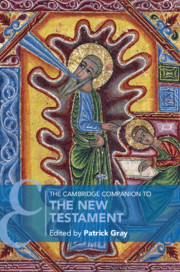Book contents
- The Cambridge Companion to the New Testament
- Cambridge Companions to Religion
- The Cambridge Companion to the New Testament
- Copyright page
- Contents
- Map
- Contributors
- Preface
- Abbreviations
- Part I Historical Context
- Part II The New Testament Writings
- Part III Methods and Modes of Interpretation
- Index
- Cambridge Companions to Religion (continued from page iii)
- References
Part III - Methods and Modes of Interpretation
Published online by Cambridge University Press: 23 April 2021
- The Cambridge Companion to the New Testament
- Cambridge Companions to Religion
- The Cambridge Companion to the New Testament
- Copyright page
- Contents
- Map
- Contributors
- Preface
- Abbreviations
- Part I Historical Context
- Part II The New Testament Writings
- Part III Methods and Modes of Interpretation
- Index
- Cambridge Companions to Religion (continued from page iii)
- References
Summary

- Type
- Chapter
- Information
- The Cambridge Companion to the New Testament , pp. 331 - 418Publisher: Cambridge University PressPrint publication year: 2021



